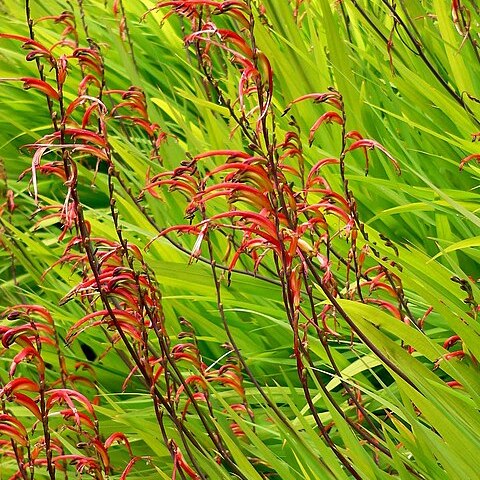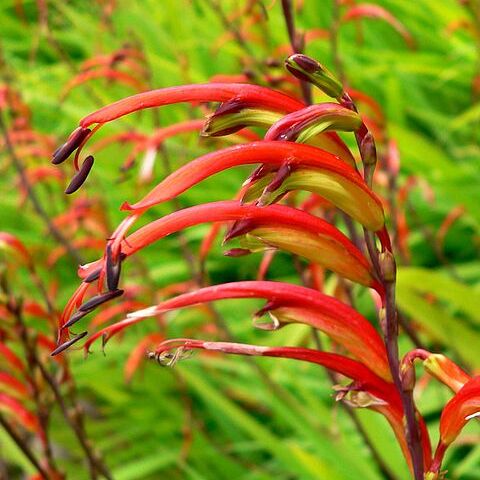Summer-green perennial. Corm slightly flattened; tunic of thinly netted fibres. Leaves basal and cauline, distichous, closely imbricate, narrow-ensiform. Spike distichous, simple or occasionally branched. Flowers strongly zygomorphic, each within 2 membranous brownish spathe-valves usually < slenderest portion of perianth-tube; tube straight and very slender below, less than ⅓ of curved, broader-cylindrical upper part; lobes < tube, unequal, upper lobe ± hooded, much > other five lobes. Stamens ± = longest lobe and arched under it. Style-branches undivided. Capsule subglobose, < spathe-valves, many-seeded. Spp. 7, of tropical and S. Africa. Adventive spp. 2.
Large perennials with annual leaves and flowers. Corm depressed-globose; tunic fibrous. Leaves basal, ensiform, flat, glabrous. Scape erect, robust. Spikes distichous or secund, many-flowered. Bracts short. Flowers spreading, zygomorphic, bilabiate, red to orange, sometimes yellow. Perianth tube narrow at base, abruptly widened into a long curved cylindrical portion; lobes shorter than tube, unequal, the dorsal lobe longer than the others and hooded. Stamens unilateral; anthers sub-basifixed, versatile. Style filiform; branches entire, slender, recurved. Capsule depressed globose, exceeded by spathes. Seeds few, globose.


